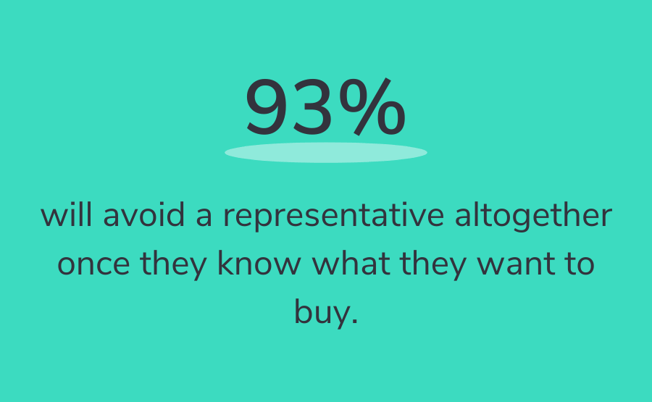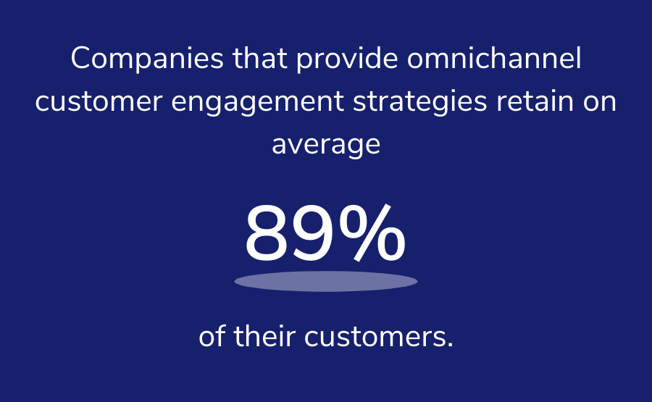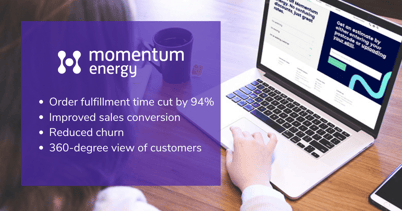3 technology barriers to customer-centricity for Energy retailers
The easy ride’s over.
It’s no longer enough for Energy retailers to deliver electrons to the end customer.
The customer experience championed by the likes of Google, Amazon and Airbnb is the new benchmark. Now your customers expect similarly convenient and personalized experiences.
But to provide this type of loyalty-engendering experience, you need to reinvent the way you do business. Your customers have to sit at the heart of your culture, technology and processes.
In other words, you need to become customer-centric.
Some people dismiss customer-centricity as a fluffy term. But following this principle has become essential for growth. After all, meeting your customers' needs directly aligns with your business goals of acquiring customers, reducing churn and increasing your average revenue per customer (ARPU).
However, for many Energy retailers, legacy technology systems remain a barrier to providing a genuinely customer-centric service.
Bearing in mind how competitive Energy retail is today, this makes growing fast – or growing at all – an uphill battle.
We’ve taken a look at what today’s Energy customers expect, alongside how legacy technology could be undermining your efforts to deliver this experience, stunting your growth in the process.
Launching new products & promotions is complex and time consuming
An area customers expect more from today’s Energy retailers is in their desire for value-added services.
This theme was cited by an experienced CIO as a key opportunity for Energy retailers reinventing their businesses.
“Customers are now looking for additional services and product ranges from their Energy providers. This creates a wealth of opportunities...The potential to diversify their product ranges presents multiple exciting avenues of growth for Energy retailers.”
This potential for growth is also reflected in the numbers.
Energy businesses that increase the flexibility of their assets and offer new services see revenues increase by 15% or more.
.png?width=652&name=Flexibility%20(3).png)
But, while it’s a clear avenue for growth, for Energy retailers with disparate legacy technology systems this opportunity remains out of reach.
The problem? Ageing technology platforms leave Product and Marketing teams struggling to deliver competitive offerings.
Fractured, inflexible Product Catalogs don’t provide the necessary agility and go-to-market speed you need to compete. Launching new products, promotions or bundles relies too heavily on IT involvement, holding up innovation.
And, as a result, providing contextual promotions or launching the value-added services and products customers desire – at the time they want them – is next to impossible.
With competitors offering timely and compelling marketing offers, and customers easily finding services elsewhere, your growth will continue to stall if you can’t launch products and promotions rapidly.
Customer channels are siloed and inconvenient
Another way your customers’ expectations have changed is in the way they want to interact with you.
It’s no secret that customers will use whichever channel is most convenient for them. Today, more often than not, this predominantly means self-serving online.
In fact 93% will avoid a representative altogether once they know what they want to buy.

The trend for self-service and unassisted channels is only on the up. But that doesn’t mean you can neglect your other channels.
Companies that provide omnichannel customer engagement strategies retain on average 89% of their customers, compared to 33% for companies with weak omnichannel engagement. So acquiring, engaging and retaining customers depends on the delivery of coherent customer experience across every channel and touch point.

And with customers only giving Utilities roughly 10 minutes per year, you have little time to impress.
However, for Energy retailers with archaic systems, a seamless omnichannel experience simply isn’t possible. Siloed customer data means there’s no coherent view of customers, leaving your customer service teams with limited knowledge of a customer’s history and preferences.
This can lead to the nightmare scenario where a customer is passed from channel to channel, having to repeat their details and request, only to end up back where they started.
With so many options to choose from, not many people today will suffer this kind of disjointed service.
This makes a technology platform that provides self service, while giving you a clear real-time view of customer data, vital to offer the frictionless customer experience needed to both win new customers and keep current ones.
Inability to personalize sales & the customer journey
On top of the value-added services and joined-up experiences Energy retail customers now expect, they also desire personalized journeys, sales and services.
Recent research from our partners at Accenture revealed customers are more likely to buy from retailers who recognize them, remember previous purchases and tailor recommendations accordingly.
But, this kind of personalization has yet to become the norm in Energy retail. Again this largely stems from an inability to use the entirety of a customer’s data.
If you’re unable to personalize your customer journey and sales, increasing your ARPU – along with your customer acquisition and retention – is a pipe dream.
Providing personalized customer journeys and recommendations makes your customers feel valued. It gives them just enough of that warm fuzzy feeling to increase their loyalty bit by bit, vital in an industry where churn averages between 25% - 35%.
Meanwhile, tailored upsells and cross-sells are a win-win, increasing your sales and giving customers more of the products and services they want.
If you have a platform that can automate the delivery of these personalized moments, or guide your sales team in the delivery of them, you’ll see it reflected in your increased revenues.
Don't let legacy systems hold you back
As we’ve explored, legacy technology and disjointed systems are holding Energy retailers back.
Ageing technology stops you from offering the kind of smooth experience today’s customers want – restricting your growth in the process.
Promoting a customer-first culture and experience is essential. But, to thrive as a customer-centric Energy retailer, you must also combine these elements with the basis of the right technology.
See how Momentum Energy reinvented their business systems and achieved a customer-centric Energy experience here.

